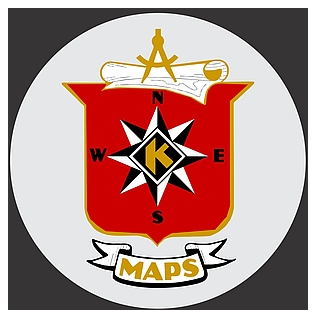Map Elements: The Compass Rose
The Compass Rose

A compass rose, occasionally called a "windrose" or "rose of the winds," is a circular diagram used on maps and navigational instruments to display the cardinal directions: North, East, South, and West. Most compass roses also include intercardinal or ordinal directions, which are Northeast (NE), Southeast (SE), Southwest (SW), and Northwest (NW). Intricate compass roses can further subdivide these directions to include secondary-intercardinal orientations like North-Northeast (NNE) and East-Northeast (ENE).
The term "compass rose" originates from the design's resemblance to a rose and its use in old maritime navigation where different wind directions were named, which is why it's sometimes referred to as a "rose of the winds."

How is a Compass Rose Used:
1. Map Orientation: The primary use of a compass rose on a map is to indicate orientation. By referencing the compass rose, map readers can determine which direction is North, for example, and then orient themselves and the map accordingly.
2. Navigational Aid: Mariners and aviators often use charts with compass roses. With a compass or GPS, they can determine their current heading and adjust their course as needed.
3. Determine Bearings: Using the compass rose, one can determine the bearing (direction) from one point to another. For example, if you want to travel from Point A to Point B and the orientation is toward the Northeast, you would set your course to follow that bearing.
4. Geographical Analysis: A compass rose can help understand geographical and spatial analysis patterns. For instance, if studying migration patterns or prevailing wind directions, the compass rose can help illustrate and quantify these directions.
5. Educational Tool: The compass rose is essential in geography and navigation education. Students learn about the cardinal and intercardinal directions and the importance of spatial orientation in various contexts.
The compass rose has been used for centuries and is a valuable tool for navigation.
/1004/site-assets/logo.png)
/1004/site-assets/phone.png)
/1004/site-assets/cart.png)
/1004/site-assets/dateseal.jpg)
/1004/site-assets/creditcards.png)